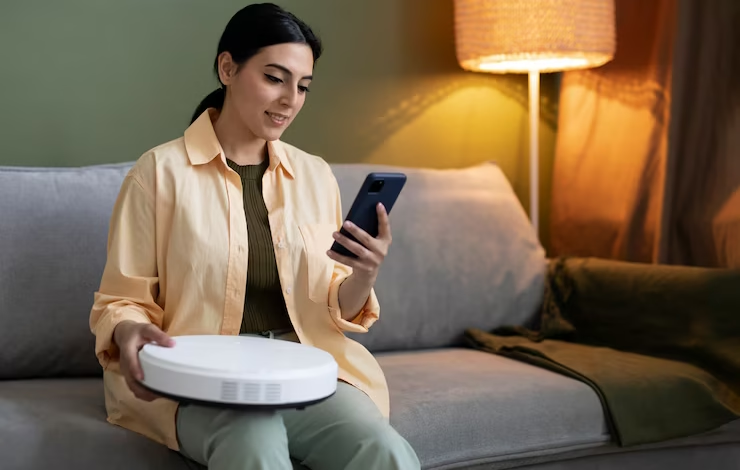Badges on layout card home assistant

If you’re diving into the world of smart home automation, chances are you’ve stumbled across Home Assistant, the open-source platform that gives you total control over your smart devices. I’ve been tinkering with Home Assistant for years, turning my home into a hub of connected gadgets, from smart lights to sensors. One of the most exciting parts? Crafting a user-friendly dashboard that makes controlling your home a breeze. That’s where badges and layout cards come in—they’re like the cherry on top of your Home Assistant dashboard, making it both functional and visually appealing.
In this guide, I’ll walk you through how to use badges on layout cards to create a sleek, organized, and powerful smart home UI. Whether you’re a newbie or a seasoned Home Assistant user, I’ll share practical tips, personal insights, and step-by-step instructions to help you elevate your Lovelace UI. By the end, you’ll know how to design a dashboard that not only looks good but also makes your smart home easier to manage.
What Are Badges in Home Assistant?
Let’s start with the basics. Badges in Home Assistant are small, glanceable widgets that display key information about your entities—think temperature sensors, light statuses, or even whether someone’s home. They’re typically placed at the top of a dashboard view, but with some clever tweaks, you can position them anywhere using layout cards. Badges are perfect for summarizing critical data without cluttering your interface. For example, I use badges to show my living room’s temperature and whether my front door is locked, so I can check both with a quick glance.
Badges are highly customizable. You can:
-
Display entity states (e.g., “22°C” or “On”).
-
Add icons or images (like a person’s avatar).
-
Set conditions to show or hide badges based on states.
-
Customize colors and tap actions for interactivity.
The beauty of badges? They’re compact yet powerful, making your dashboard design clean and efficient.
Understanding Layout Cards in Home Assistant
Now, let’s talk about layout cards. In Home Assistant’s Lovelace UI, cards are the building blocks of your dashboard. A layout card (like the grid card or custom layout-card) lets you arrange other cards or badges in a specific way, giving you control over the dashboard organization. Unlike the default masonry view, which stacks cards vertically, layout cards let you create grids, stacks, or even responsive designs.
For instance, I once struggled with a cluttered dashboard where my lights, sensors, and media players were jumbled together. Switching to a grid layout Home Assistant style with a custom layout-card changed everything. I could group related entities (like all kitchen devices) into neat sections, with badges highlighting key statuses at the top.
Popular layout cards include:
-
Grid Card: Arranges cards in a grid with customizable columns.
-
Vertical/Horizontal Stack: Stacks cards vertically or horizontally for a clean look.
-
Custom Layout-Card: A community plugin for precise control over card placement.
When you combine badges with layout cards, you get a dashboard that’s both informative and visually appealing.
Why Use Badges on Layout Cards?
So, why bother with badges on layout cards? Here’s why I love this combo:
-
Quick Insights: Badges show critical info (like a low battery sensor) without taking up much space.
-
Flexible Design: Layout cards let you place badges exactly where you want them, not just at the top.
-
Conditional Display: You can set badges to appear only when certain conditions are met (e.g., show a “Window Open” badge only when a window is actually open).
-
Personal Touch: Customizing badges with icons or colors makes your dashboard feel uniquely yours.
In my setup, I use a grid layout with badges to monitor my home’s security sensors. If a door is unlocked, a red badge pops up in the corner of my security section, grabbing my attention instantly. It’s practical and looks slick.
Best Practices for Badges and Layout Cards
After countless hours tweaking my Home Assistant dashboard, here are my top tips for using badges on layout cards effectively:
-
Keep It Minimal: Don’t overload your dashboard with badges. I learned this the hard way when my dashboard looked like a Christmas tree with too many sensors. Stick to 3–5 key badges per section.
-
Group Logically: Use layout cards to group related entities. For example, I have a “Kitchen” grid card with badges for temperature, humidity, and stove status.
-
Use Icons Wisely: Choose icons that instantly convey meaning (e.g., mdi:lightbulb for lights). Material Design Icons has thousands of options.
-
Leverage Conditions: Conditional badges reduce clutter. I only show my “Low Battery” badge when a device’s battery is below 20%.
-
Test Responsiveness: Ensure your layout looks good on both mobile and desktop. The sections view is great for responsive designs.
Personal Experience: My Dashboard Journey
When I first started with Home Assistant, my dashboard was a mess—random cards scattered everywhere, no clear structure. I’d spend minutes hunting for the right light switch. Then I discovered badges and layout cards. By creating a grid layout for each room and adding badges for critical sensors (like motion detectors and door locks), I transformed my dashboard into a control center that my whole family could use.
One memorable moment was when I set up a badge for my thermostat that changes color based on the temperature. My wife, who’s not tech-savvy, loved how she could see at a glance if the house was too warm. That’s when I realized the power of a well-designed Home Assistant frontend—it’s not just about tech, it’s about making life easier.
Advanced Tips for Power Users
If you’re comfortable with YAML and want to take your dashboard to the next level, try these:
-
Custom Badge-Card: Install the badge-card plugin via HACS to place badges anywhere in your layout, not just at the top.
-
Dynamic Colors: Use Card-Mod to change badge colors based on entity states. For example, I make my humidity badge blue when it’s below 50% and red when it’s above 70%.
-
Entity Filters: Create badges that only show specific states, like lights that are on. This is great for tracking open windows or active devices.
-
Subviews: Use subviews with badges to create a hierarchy of dashboards. I have a main view for the whole house and subviews for each room, each with its own badges.
Common Pitfalls and How to Avoid Them
Here are some mistakes I made (so you don’t have to):
-
Overcomplicating YAML: Keep your YAML clean and use proper indentation (2 spaces). A single extra space once broke my entire dashboard
-
Ignoring Mobile Users: Test your layout on a phone. I once designed a beautiful grid that looked terrible on my iPhone until I adjusted the column widths.
-
Too Many Badges: More isn’t better. Focus on what you actually need to see at a glance.
Conclusion: Make Your Dashboard Your Own
Using badges on layout cards in Home Assistant is a game-changer for creating a user-friendly dashboard. Whether you’re displaying a temperature sensor, a door status, or a custom icon for your smart lights, badges add functionality without sacrificing style. Pair them with layout cards like grids or stacks, and you’ve got a smart home UI that’s both practical and beautiful.
Take it from me—spending a few hours tweaking your Lovelace UI is worth it. My dashboard went from chaotic to intuitive, and now even my kids can turn off the lights without asking me for help. Experiment with badges, play with layouts, and don’t be afraid to dive into YAML for extra control. The Home Assistant community is full of inspiration, so check out forums or Reddit for more ideas.



